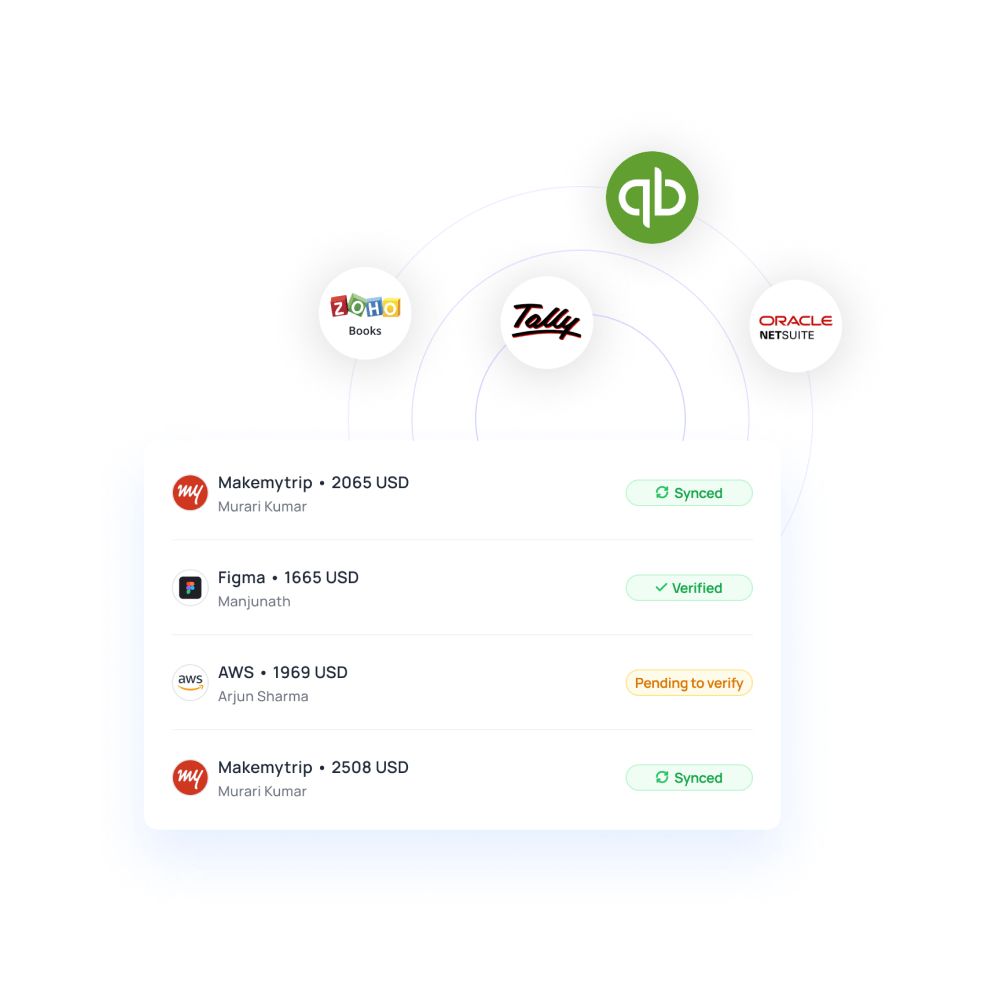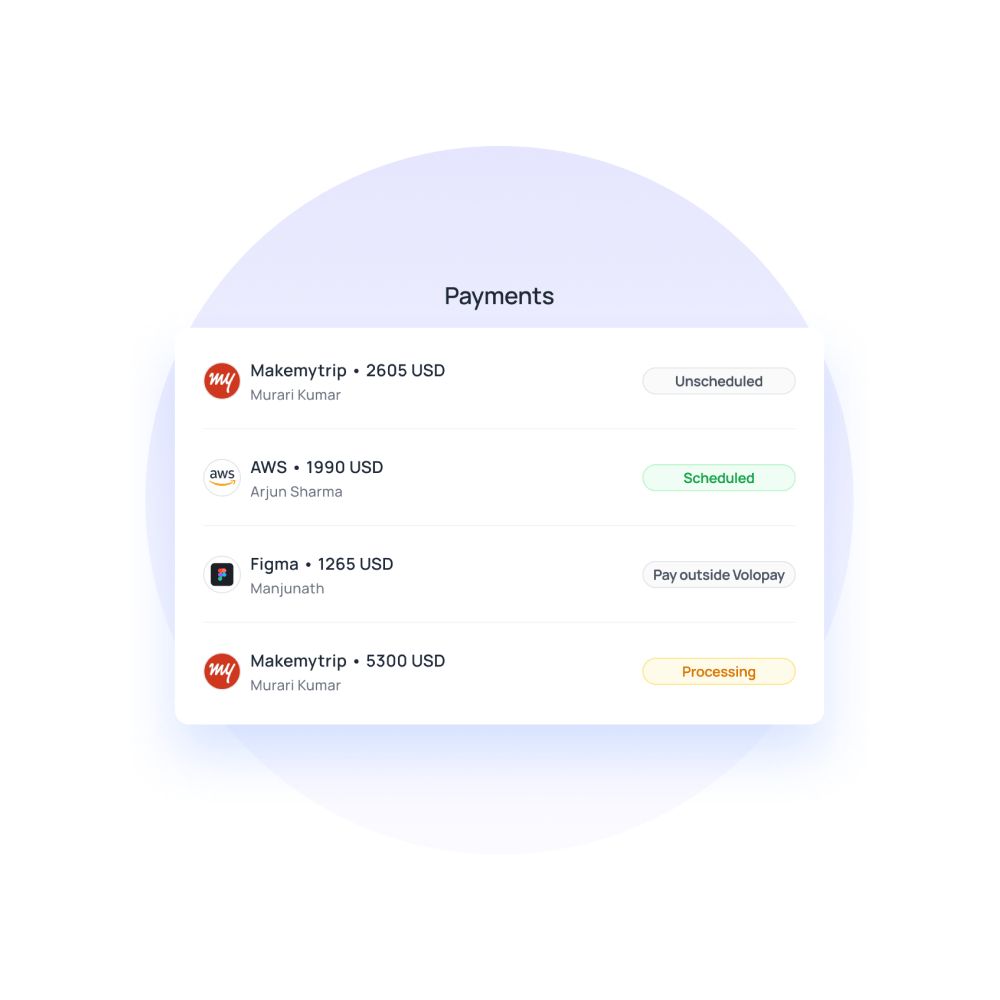Online subscription management with virtual cards
Manage your business subscriptions with virtual cards and make subscriptions payments quick and painless. We will take a deeper look into how businesses can manage online subscriptions using virtual cards and what are the challenges they confront in managing them ranging from fraud, managing invoices to budget cuts.
Where every business is trying to mark a digital footprint there has been an increase in online spending activity, and virtual payments for subscriptions are no less. And this is where virtual cards come into play. They have become a more intelligent way to handle your online subscriptions. When it comes to subscription management, business travel expense management, and much more virtual debit cards come with all sorts of unique features from setting limits, tracking subscriptions to freezing individual cards.
What are virtual cards?
Virtual cards for businesses are budget-specific payment cards that are used to pay for online expenses, be it subscriptions or any online purchase. It has a digitally created 16-digit card number and a CVV code that is linked to your account to provide you with more flexibility in your online purchases.
It is the best tool to empower employees to spend online without compromising control. As in, employees won't have to worry about misplacing the card, which might expose the organization to potential fraud. Yes, as these card numbers are generated digitally, using the software so the numbers won’t work to allow access to your accounts or to be traced back to your company.

Managing SaaS subscriptions with virtual cards
Now managing all recurring subscriptions from a single company card gets complicated as you don’t know for which subscriptions you paid, when it’s overdue or when your trial for a subscription ends until and unless you check your card statements.
But through subscription management software you can have specific virtual cards for each subscription and easily manage and pay for each subscription and never miss out on any payment due date.

What is subscription management?
Subscription management is the process of managing business subscriptions repeatedly. Managing subscriptions using virtual cards involves paying for all your SaaS or recurring payments for a specific length of the term.
These are subscription-based software in which a vendor creates and distributes software by hosting it centrally on a cloud. Businesses pay to use this ready-to-use software on a recurring payment basis for a predetermined amount of time. There can be various types of subscriptions from Linkedin Premium, Slack, Ahrefs, Grammarly premium, or maybe SaaS tools for sales automation, Web Hosting etc.

Streamline your recurring billing with Volopay
How do virtual cards work?
Virtual cards are used for online spending and not in-person or in-store purchases. For any online transaction, virtual cards function precisely like regular plastic cards. They are like the virtual wallet that you can link with Apple pay or Google Pay. Instead of receiving the 16-digit number, expiration date, and CVV from a card in your wallet or purse, you log into your account and retrieve the information there.
Your funds are instantly available, and you can top up or withdraw them for one-time payments or continuous transactions. The best part about virtual cards is you can freeze them anytime. Every virtual card is designed to handle a single online transaction. For example, you don’t want to continue with a LinkedIn Premium subscription just delete it or freeze it right away and it won’t charge you anymore on your subscription.
Challenges in managing subscriptions
Though everything now has a digital footprint, many organizations struggle to implement effective processes for handling these expenses related to subscriptions. Not only this, many enterprises have software subscriptions with no billing owner. Lost or compromised card information is one of the most frustrating aspects of maintaining huge tech stacks, and they can eat up a lot of your team's work.
As you use your credit card for various expenses such as for ads, travel, office supplies, and others it becomes difficult to manage the budget for all your expenses while paying through a single company card or you can say it’s easy to lose track of how much money you've spent on online purchases.
And sometimes funds become insufficient to pay for your subscriptions which could lead to disproportionate budget cuts but you also will not be able to renew a subscription you need the most.
Amidst all the expenses ranging from office supplies, travel to marketing subscriptions sometimes goes unnoticed because managing several subscriptions from a single company card is a hell of a task. As it gets difficult for the finance team to keep track of renewals, cancellations, and overlaps of subscriptions.
For example; You have 100’s of subscriptions for your business, and if you want to temporarily pause or cancel your Hubspot subscription, maybe, through your credit card you can not do that as your credit card doesn’t come with this feature and it might lead to fraud risk.
The biggest challenge of managing subscriptions through a corporate credit card is you'll have to go over your statements every month or every year to make sure you don't miss any payments or forget to cancel a free trial before it becomes a paid membership.
Let’s take a note that you are billed monthly or annually for your subscriptions but now you don’t exactly remember when is your due date for those recurring payments or when your trial ends and you will get overcharged for a subscription you don’t want anymore.
Are virtual cards secure to pay for business subscriptions?
Anytime virtual debit cards are more secure and safe and that’s why they are the best tool to manage your recurring payments. As virtual cards are generated digitally through an expense management software platform or you can say they live in your digital wallet you don’t have to worry about losing your virtual debit card. Virtual cards do not have magnetic strips or visible card numbers like physical cards, making it even more difficult for unauthorized users to access your account. Hence they are 100% secure.

Why not use physical cards for subscription management system?
Physical cards are similar to virtual cards as both are used for business transactions, however physical cards can be used for both in-store and online purchases, whereas virtual cards can only be used for virtual payments. You'll only need a physical card if you're making many cash purchases.
They might not be a good choice to manage your subscriptions as theft and misplacement of physical debit or credit cards are common occurrences. What if your card gets lost? As a result of the increase in fraudulent activity, hackers can simply counterfeit physical debit cards.
Physical cards come with an expiration date so you need to get a new one. And with that, it puts a huge toll on managing the subscriptions you billed with your previous physical cards.
You'd have to keep track of all your subscriptions and update them with updated card information.
Whereas, the underlying credit or debit card information is less likely to be exposed to the merchant with a virtual card. There is no possibility of cloning or fraud because they are only visible to you.
How do recurring payments work with virtual cards?
Virtual cards occasionally allow you to set a spending restriction while making virtual payments. This function is frequently used with recurring payments to ensure that a merchant does not increase prices or overcharge you without your knowledge. Some cards also let you restrict transactions to a certain merchant or a small group of people, which can help protect you from fraud.
Employees may easily and swiftly obtain approval for each purchase, whether a virtual card is generated for one-time usage or for recurring purchases. Whichever platform you use, it will process the request for approval according to the expense policies set up at your corporation.
You can view vendor-specific cards and transactions in your platform’s dashboard. And track and manage all your transactions from a wider view. Every entity provides you with an automated accounting feature to sync your virtual card transactions into the accounting tab so you'll never have to reconcile credit card accounts again.
You wish to purchase a subscription to, say, Ahrefs. You bought a month's worth of trial software. In general, you can buy it with your business credit card by entering the card information. Now this will become a recurring payment if you wish to continue with a paid one after your trial ends.
Handle all your online recurring subscription using virtual cards
Common challenges of recurring payments
If your trial expires and you do not cancel because you did not receive an email reminder or didn’t check your statements, it will be converted to a paid subscription. Plus, it goes unnoticed among all of your company's expenses as you rely on a single credit card to pay and manage your expenses.

Managing budgets
It will result in budget cuts because you won't be able to pay for other purchases you've made, or you won't be able to pay for ads you're running owing to inefficient money.
Fraudulent activity
There's also the possibility of fraud, because personal spending can be fabricated under the pretext of SaaS payments, and who has time to double-check each expense with so many subscriptions to track.
Process to use virtual cards to pay for your subscriptions
The process to set up virtual corporate cards for your business might slightly vary depending on who your card provider is and the platform you use to manage your account. But, all in all, the first step is setting up your account with your card provider company and then pretty much the same process as mentioned below:
Get your virtual cards
Every card provider provides you the option to create an unlimited number of virtual corporate cards.
Create approval workflows
Set up clear approval protocols for new subscription requests as and when you reach the spending limit so you know who approved the payment and who is liable at all times.
Manage your card settings
While setting up your virtual card you can set parameters such as how long you want the virtual credit card to be active, who will be the owner, and set spending limits on each card according to the budget.
Sync with accounting software
Easily match your invoices by syncing them to your accounting software as well as all of the automatic encoding.
Pay for your subscriptions
So now that you have multiple cards for every vendor with a dynamic spend limit go and pay for as many subscriptions you want without the hassle of managing it.
Manage your subscriptions
Stop paying for unwanted subscriptions, see all your vendors at one place with full control over oversubscriptions. Cancel or pause subscriptions easily with just a click.
Why Volopay’s business virtual cards are the best solution to manage online subscriptions?
It's difficult for the finance team to keep track of renewals, cancellations, and overlaps when you have many SaaS subscriptions. As a result, it's critical to develop a subscription management strategy before it's too late and you're swamped up in unwanted SaaS subscriptions.
For each subscription, Volopay allows you to generate an unlimited number of virtual cards. They can be made in a matter of seconds and distributed to specific employees. You may easily remove it from the expense management platform and replace it with another card in a jiffy.
Volopay app is the best app to manage subscriptions as you can also cancel and pause the particular card if you no longer require the subscription or want to temporarily suspend the subscriptions directly from the app. One card transaction can be seen by all employees because it is virtual. You can immediately create a new card if the existing one is topped out.
Get real-time visibility for online purchases
With Volopay’s unique and easy-to-use dashboard you can centrally manage and see every transaction made through virtual cards. The data can be readily filtered by department, merchant, employee, team, and other categories. You can see all transactions across all team members and functions from a wider view. You may also access comprehensive usage information, spending insights, and track every subscription, all of which are updated in real-time.
Prevent fraud
As these cards are generated and used online, it eliminates the need of being stolen, unlike physical cards. Since the card has a unique 16-digit number for every card it can't be traced back to the real card, and it won't operate once you've made a purchase. So there is no chance of fraudulent activity. Even if you are suspicious of any fraudulent activity you can simply cancel your virtual card and request a new one.
Sync all your transactions
You can sync all your virtual transactions with the accounting tools like Xero, Quickbooks, and Netsuite, and get updated directly under your vendor in a single click. You can reconcile your payments and receipts into your existing subscription management system along with all the automated encoding.
Limit spends based on budgets
You can set spending limits on every virtual card and restrict which merchants you can pay using virtual cards. And if you want to request funds, you can request funds and have them accepted in real-time using the Volopay mobile app, online app, or even an email. You can even adjust limits and change cardholders without cancelling subscriptions. Finance can set up rules and reminders to collect invoices on time.
Earn reward for every business subscription payment
Pay your subscriptions easily with virtual cards and save up to 2% on all your subscription payments.
Avoid duplicate costs
You'll never have to worry about paying for the same subscription twice after you've set up a virtual card. You can avoid incurring duplicate expenditures by receiving notifications to authorize payment for each subscription and tracking them from your Volopay dashboard.
Never go over budget again
Create a separate virtual card for each vendor, each with its own budget and owner. Card limitations automatically adjust based on your selected budget, so you won't miss a payment or get overcharged.
FAQs
Yes, as they exist in your mobile phone you can pay using Google pay and Apple pay like you would do normally with your debit or credit cards.
Once can issue an unlimited number of virtual cards to make business payments or subscription services.
Yes, you can easily track and manage paid subscriptions through any spend management platform. You can see all your cards categorization through an easy-to-use dashboard.
If your spending limit is reached you can anytime request more funds onto your card.
No, you don’t need to collect any receipts. All your receipts will be uploaded instantly to your accounting software.
Yes, you can pause or cancel your subscription when you don’t want to continue with any one of it and save yourself from any overcharges.








Trusted by finance teams at startups to enterprises.